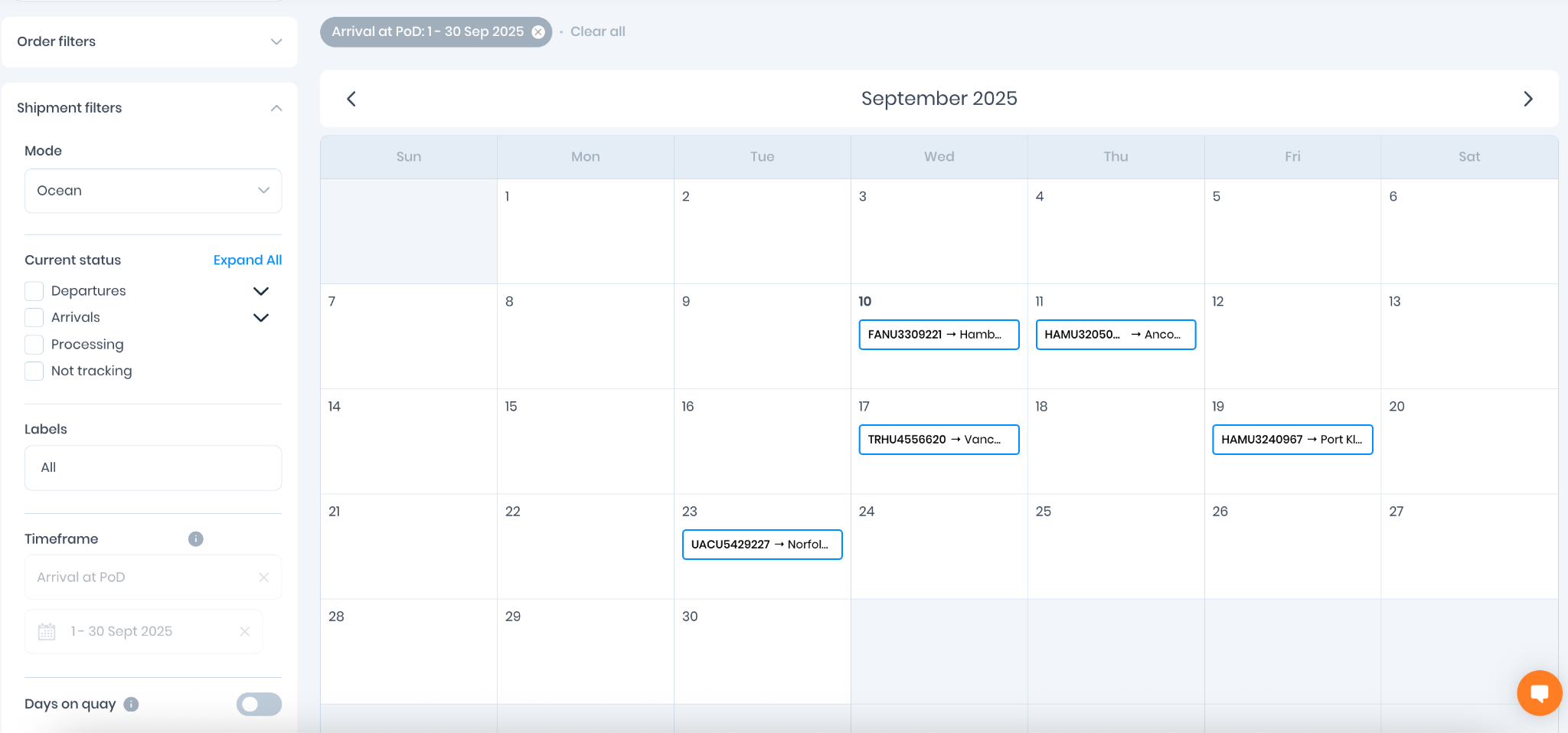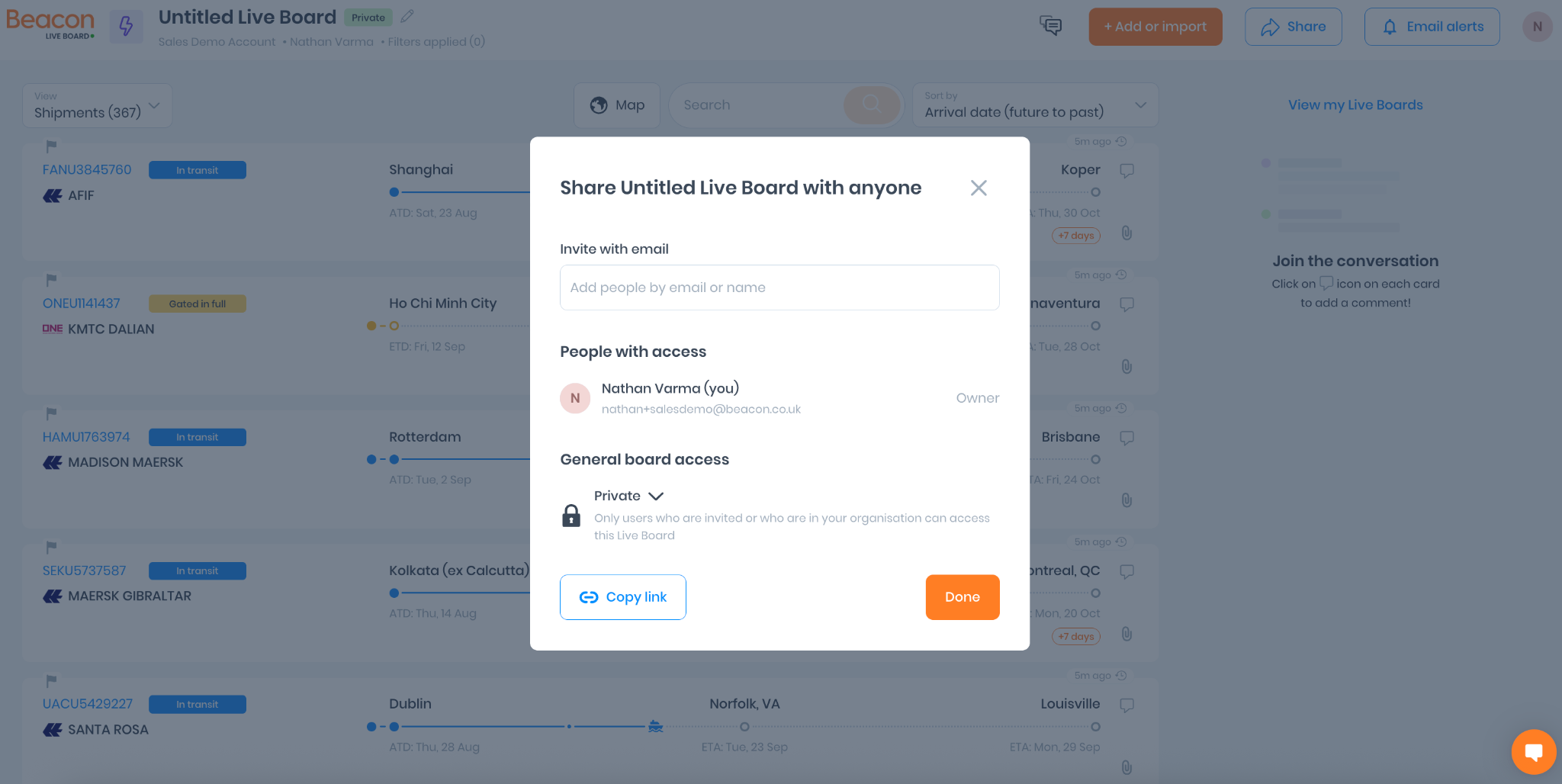A trade lane (or trade route) refers to a specific pathway along which goods are transported between two or more locations, typically across international borders. Trade lanes are established based on the flow of goods and the economic relationships between countries or regions. They encompass both maritime and air routes and play a crucial role in global supply chains by facilitating the movement of goods and fostering international trade.
Transit time refers to the duration it takes for goods or shipments to travel from their origin to their destination. It is a crucial metric in supply chain and logistics management, as it directly impacts delivery schedules, inventory levels, and customer satisfaction. Transit time encompasses the entire journey of a shipment, including transportation, handling, and processing at various checkpoints along the route.
Transloading refers to the process of transferring goods or cargo from one mode of transportation to another, typically from one type of truck or railcar to another, or from rail to truck and vice versa. This logistical practice is often employed to optimize transportation routes, reduce costs, and improve overall efficiency in supply chain operations.
A Transportation Management System (TMS) is a specialized software solution designed to streamline and optimize transportation and logistics operations within supply chains. It provides functionalities to effectively manage and control the movement of goods from origin to destination.
Transportation lead time refers to the duration it takes for goods to be transported from the point of origin to the final destination. It encompasses the time required for transportation activities, including loading, transit, and unloading, across various modes of transport such as road, rail, air, or sea.
A transshipment is the process of transferring goods from one transportation vehicle or vessel to another during their journey from origin to destination. It typically occurs at intermediary points along the supply chain route, where cargo is transferred between different modes of transportation, carriers or vessels.
Twenty-foot Equivalent Unit (TEU) is a standard unit of measurement used in the shipping industry to quantify the cargo-carrying capacity of container vessels. It represents the volume of a standard twenty-foot-long shipping container.
An Ultra Large Container Vessel (ULCV) is a massive container ship used on major trade routes, capable of carrying over 14,000 TEUs.
Vendor Managed Inventory (VMI) is a supply chain management strategy where the supplier or vendor takes responsibility for managing the inventory levels of their products at the customer's or retailer's location. In this arrangement, the vendor monitors the inventory levels based on agreed-upon criteria such as sales data or inventory levels, and initiates replenishment as needed.
Verified Gross Mass (VGM) is a term used in the shipping industry to refer to the total weight of a packed container, including its contents and packaging materials. It is a crucial requirement mandated by the International Maritime Organization (IMO) under the Safety of Life at Sea (SOLAS) convention to enhance safety in maritime transportation.
A floating structure with its own mode of propulsion designed for the transport of cargo and/or passengers. In the Industry Blueprint 1.0 "Vessel" is used synonymously with "Container vessel", hence a vessel with the primary function of transporting containers.
A vessel sharing agreement (VSA) is a cooperative arrangement between shipping companies that allows them to share space and resources on vessels for specific routes.
Vessel bunching refers to the situation where multiple vessels arrive at a port simultaneously or within a short period, leading to congestion and delays. This clustering of vessels can overwhelm port facilities, causing extended wait times for berthing, loading, and unloading operations.
A vessel call sign is a unique identifier assigned to a ship for radio communication purposes. It is used to distinguish the vessel from others in maritime communication systems, including VHF radios and satellite communications.
A vessel omission (sometimes called a port omission) occurs when a scheduled vessel does not call at a planned port during its voyage. This disruption means that the vessel skips the port entirely, which can impact the transportation and delivery schedules of goods.
In cargo shipping, vessel rotation is the planned sequence of port calls that a shipping vessel follows on its route to optimize cargo loading and unloading operations.
The timetable of departure and arrival times for each port call on the rotation of the vessel in question.
A journey by sea from one port or country to another one or, in case of a round trip, to the same port.
Warehouse utilization is a logistics metric that refers to the effective use of available warehouse space for storing goods and inventory.
Order for specific transportation work carried out by a third party provider on behalf of the issuing party.
Logistics yard management refers to the process of overseeing and controlling the movement of trucks, trailers, containers, and other vehicles within a yard or distribution center. This includes tasks such as scheduling, tracking, and coordinating the arrival, departure, and storage of these vehicles.
%20(1).png)
Beacon Insider: August
Hey there! Portia from Customer Success here. I've been talking with customers and prospects about our August releases, and honestly? These two features are game-changers for how you manage your supply chain data.
Calendar View: Because Your Brain Thinks in Timelines
Let's be real - when someone asks "what's arriving next week," you probably picture a calendar in your head, right? Well, now Beacon actually shows you one.
Here's what Calendar View does:
Our new Calendar View sits right alongside your familiar table and card views, but it displays everything on an actual calendar. All your containers show up on the dates they're departing or arriving. Pretty straightforward, but incredibly powerful.
The backstory: This came out of our AI hackathon last month when Richard (our head of engineering) was listening to some customer feedback - and Calendar view was born.

Why customers love it:
- Visual planning made simple: See your entire shipment timeline at a glance
- Interactive like everything else: Click any date and you get the same detailed, live data you're used to from card view
- Historical insights: Flip back to see what arrived in previous months
- Perfect for meetings: Instead of scrolling through tables, just show the calendar
Share Button: "Just Hit Share"
You've spent 10 minutes getting your filters just right, and then you realize three other people need to see this exact view? Now you can share that.
How it works:
You're looking at your orders and shipments page, you've applied all your filters, and boom - hit the Share button. It instantly creates a liveboard with all your filters intact and lets you choose who gets access.
Real-world example: Marcus from your warehouse team filters for "in-transit, arriving next 14 days" and shares it with his dock team, and they're all aligned for the week.

Common ways people use it:
- Warehouse coordination: Share that "arriving in next 14 days" view with your dock team
- Stakeholder updates: Send filtered views to managers without them having to dig through everything
- Team briefings: Create consistent reports for weekly meetings
- Cross-department alignment: Get logistics, planning, and warehouse on the same page
The early feedback has been encouraging, with teams appreciating the ability to share exactly what they're looking at without losing context.
Getting Started Is Simple
Calendar View: Look for the calendar icon next to your table and card view options. Click it, and you'll see all your shipments plotted on dates.
Share Button: It appears on your orders and shipments pages whenever you have data that can be shared. Filter your view, click Share, choose your recipients.

-min.png)

